There’s no shortage of art in Barcelona. The greats like Miró and Picasso have left their marks across the city, and contemporary galleries such as the Museu Nacional d’Art de Catalunya (MNAC), Centre de Cultura Contemporanìa de Barcelona (CCCB) and Museu d’Art Contemporani de Barcelona (MACBA) continuously show high-quality work with expert curation. I’ve loved it for the 3 years I’ve lived here and still feel I’ve only scratched the surface.
With my consumption of art (specifically photography) increasingly significantly over this time, I’ve noticed that there is almost always at least one project devoted to rising sea levels, forest fires, drought, human displacement or other climate change related topics. Of course, it’s part of the zeitgeist of our times, and I promise I’m not complaining, but it always makes me wonder:
Can art change anything?
That question has stuck with me through several recent exhibition visits. And so, it seemed time to dig in and see what others are saying on the topic. I came across a study that helped me make sense of my mixed feelings:
Artists on Climate Change: Their Intended Impact and Audiences, written by Ulrike Hahn and Pauwke Berkers. Based on 30 interviews, it looks at how artists working on climate themes perceive their own role, and how they imagine (or hope) their work will land.
What Do Climate Artists Actually Want to Achieve?
According to the study, most climate-focused artists don’t see themselves as saviours. They’re not trying to write policy or save the planet through a single project. Instead, their goals are often emotional:
- Provoke awareness
- Deepen empathy
- Create space for reflection
For me, that’s the tricky part. My initial thinking is that if you are building your body of work around a topic, especially one where there’s a victim, there’s also a responsibility to give back. And I’m not always convinced that simply bringing awareness to an issue is enough.
For instance, perhaps a project featuring flood victims should also seek to help those affected rebuild their lives. Or, maybe a project designed to bring awareness to an area being ravaged by corporate greed should seek to financially assist those opposing it?
That skepticism is related to another finding in the aforementioned study, which points out that there is a mismatch between intention and audience. Apparently, most people attending climate related exhibitions are already engaged—or at least sympathetic—to the cause. So while the work is powerful, it’s can simply be preaching to the choir.
A Front Row Seat in Barcelona
So am I saying that artists can’t make a difference? No, of course not. In fact, doing this research and reflecting on the shows I’ve seen recently has softened my opinion. I think that maybe it’s asking a lot of a single person. Maybe everyone plays their role, and there’s those who are meant to bring awareness to the existence and magnitude of these issues, and those whose job it is to see it and take further action. It takes a lot of time and resources to create a project and get it into the world, and I don’t think we should discourage any discourse on one of the most important issues we face as humans.
There is power in putting a face to the climate crisis beyond news headlines and every conversation has the potential to snowball into something greater.
Here’s a few that have done that for me in Barcelona:
Revela’t and Gideon Mendel’s Burning World
At Revela’t, Gideon Mendel’s Burning World. Portraits in Ashes stood out. In each photograph, survivors of wildfires pose among the ruins of their homes—burnt walls, melted objects, ash-covered ground. The scenes are haunting, yet the portraits carry a sense of dignity. Mendel’s focus isn’t catastrophe; it’s presence and witness.
The strength of this for me is that it is focused on the people and what’s left behind, no spectacle. It humanises the impact that climate change is having more than footage of water bombers flying overhead ever could.
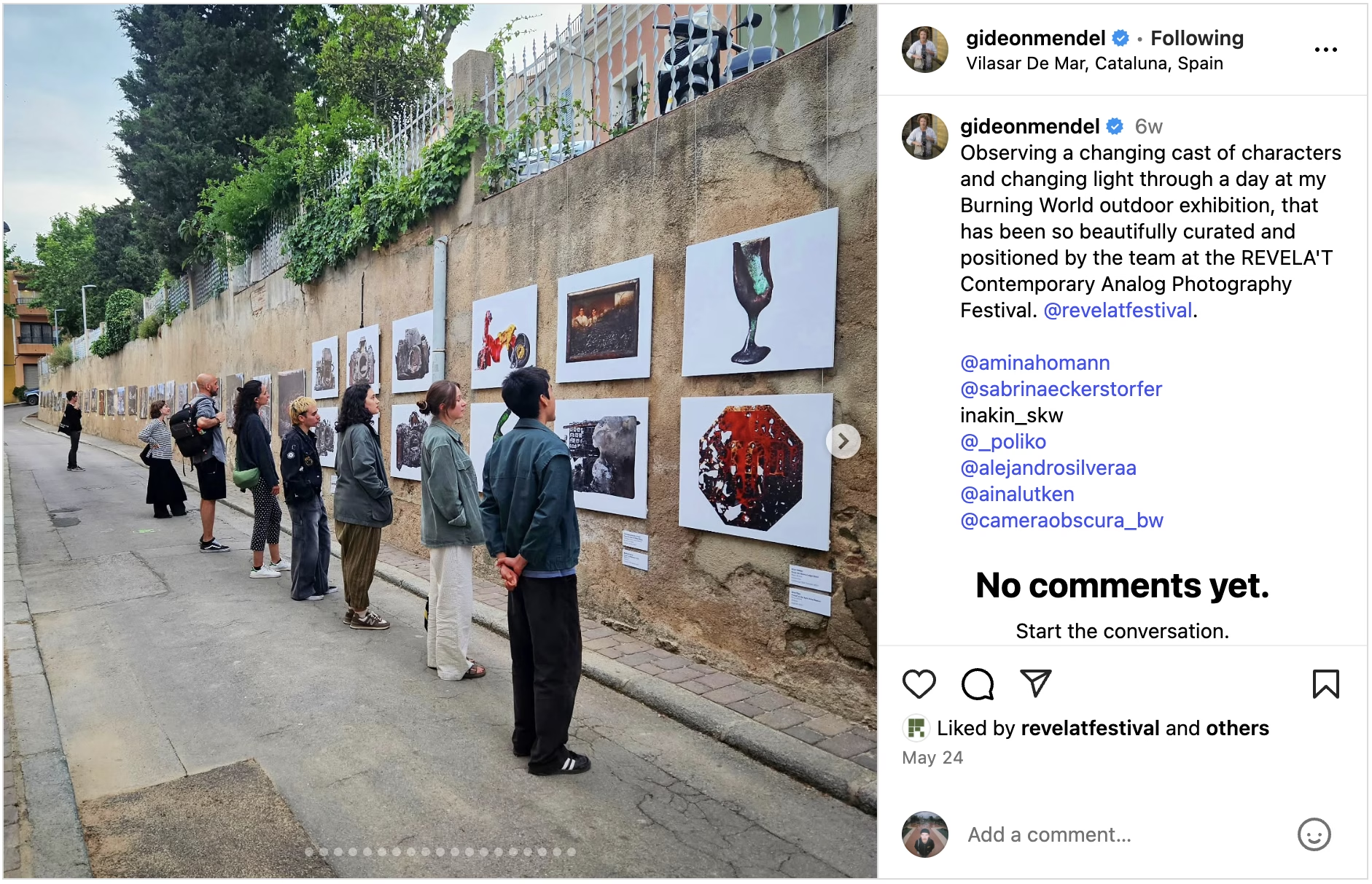
Amazonia at CCCB
Amazonias at CCCB was another impactful show with a focus on the beauty and plights of the “lungs of the world”. This exhibition went deep into the lives of the over 30 million people that live in the Amazon, including art, music, indigenous voices, and how they each interact with the largest tropical ecosystem in the world.
Amazonia didn’t just inform, it invited solidarity—highlighting the immense biodiversity of the region and its struggles with deforestation, mining, agribusiness, and the construction of massive infrastructure.
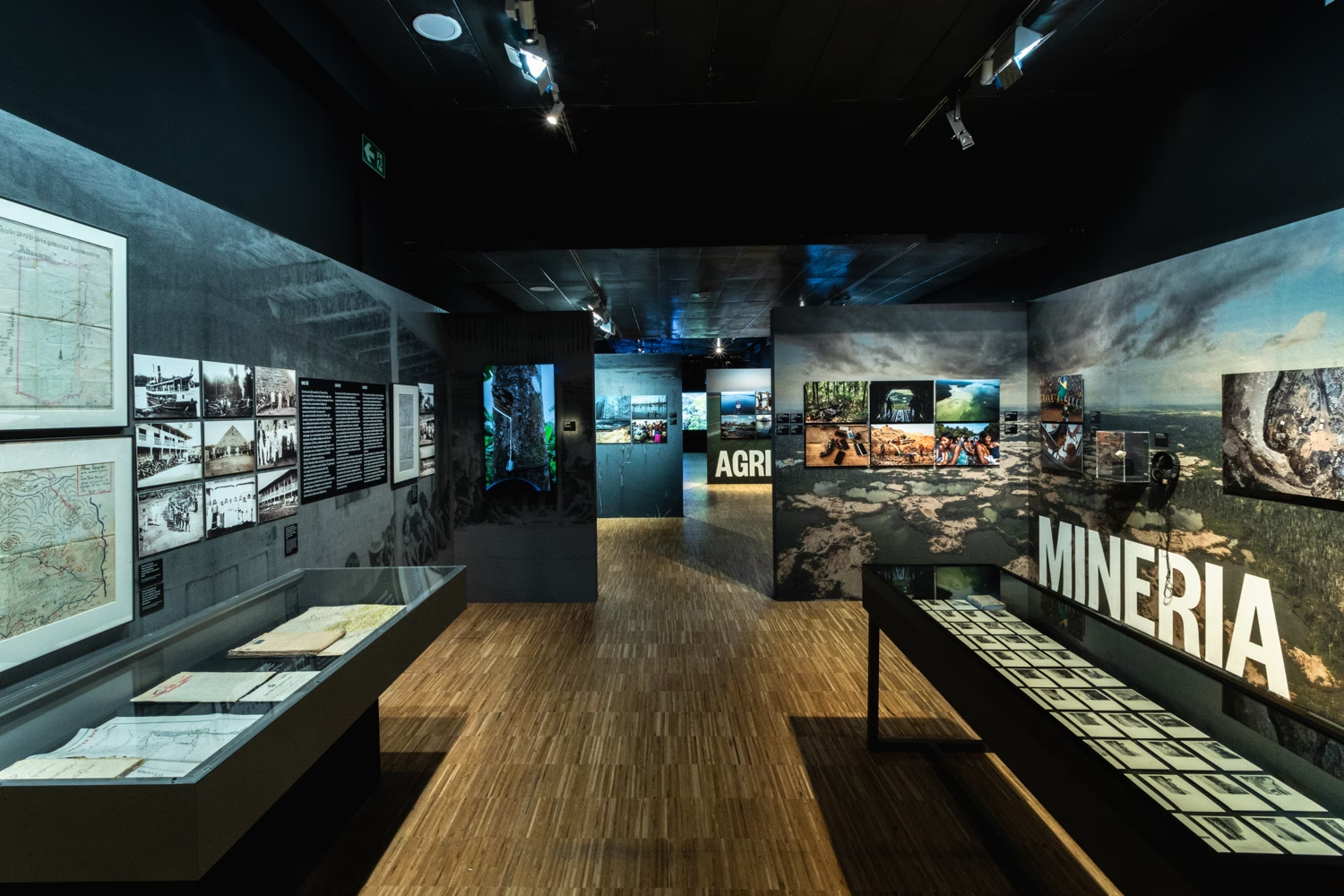
World Press Photo
World Press Photo is always an emotionally exhausting visit. It throws some of the most challenging issues faced by humanity right in your face: war, famine, illness, tyranny, and yes, climate change.
Eddie Jim’s Fighting, Not Sinking shone light on the effects of climate change on indigenous communities in Fiji. His image shows a grandfather and his grandson standing where the grandfather recalls the shoreline used to be when he was a kid. This was a powerful representation of just how much has changed in a single lifetime, and how much more change is to come in the lifetimes of future generations.
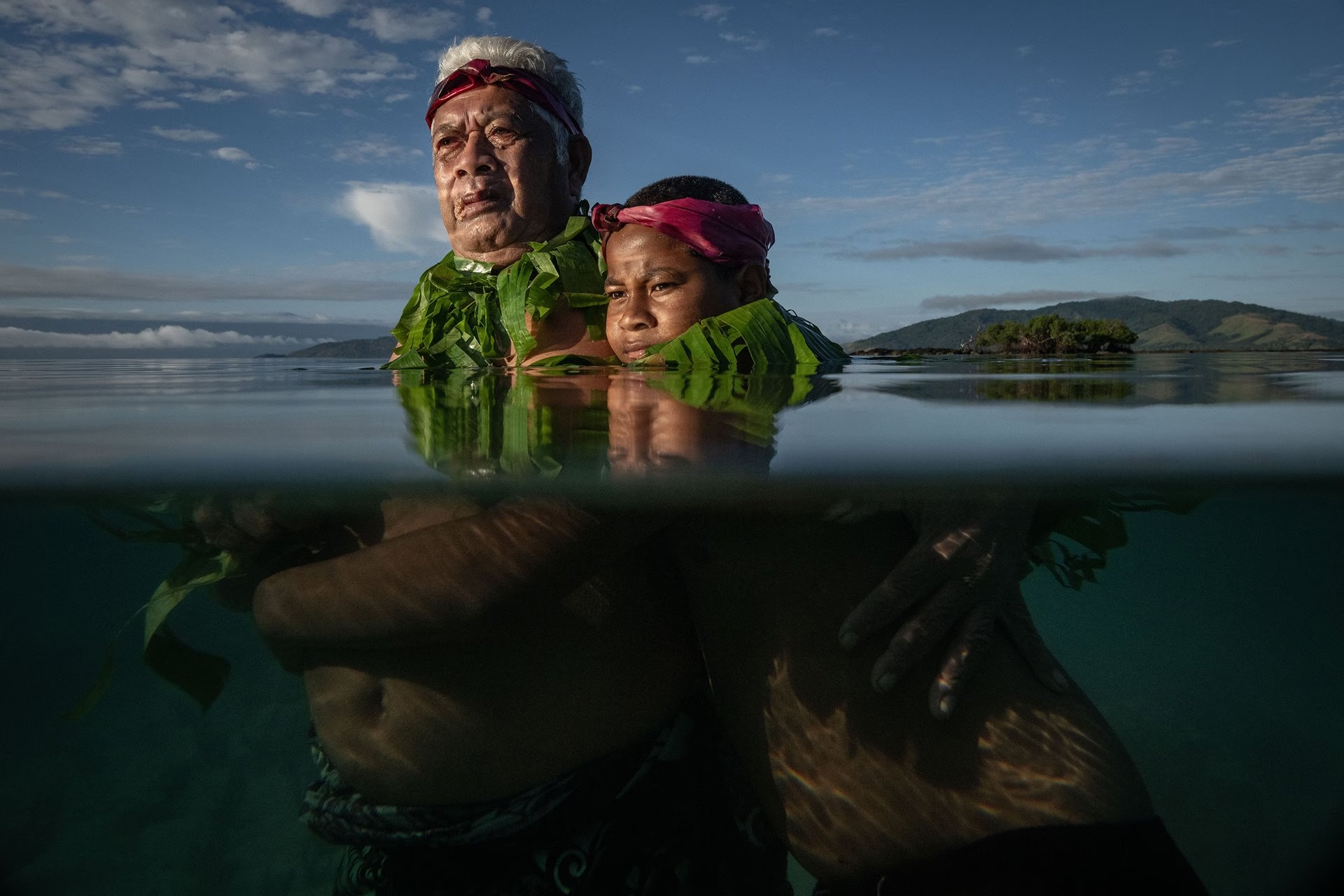
Another image that stood out, perhaps because it’s close to home, was Charles-Frédérick Ouellet’s A Day in the Life of a Quebec Fire Crew, highlighting challenges of Canada’s record-breaking fire season in 2023. Here, you don’t only reflect on the destruction of natural disasters, but also on the people that put themselves in danger to manage them.
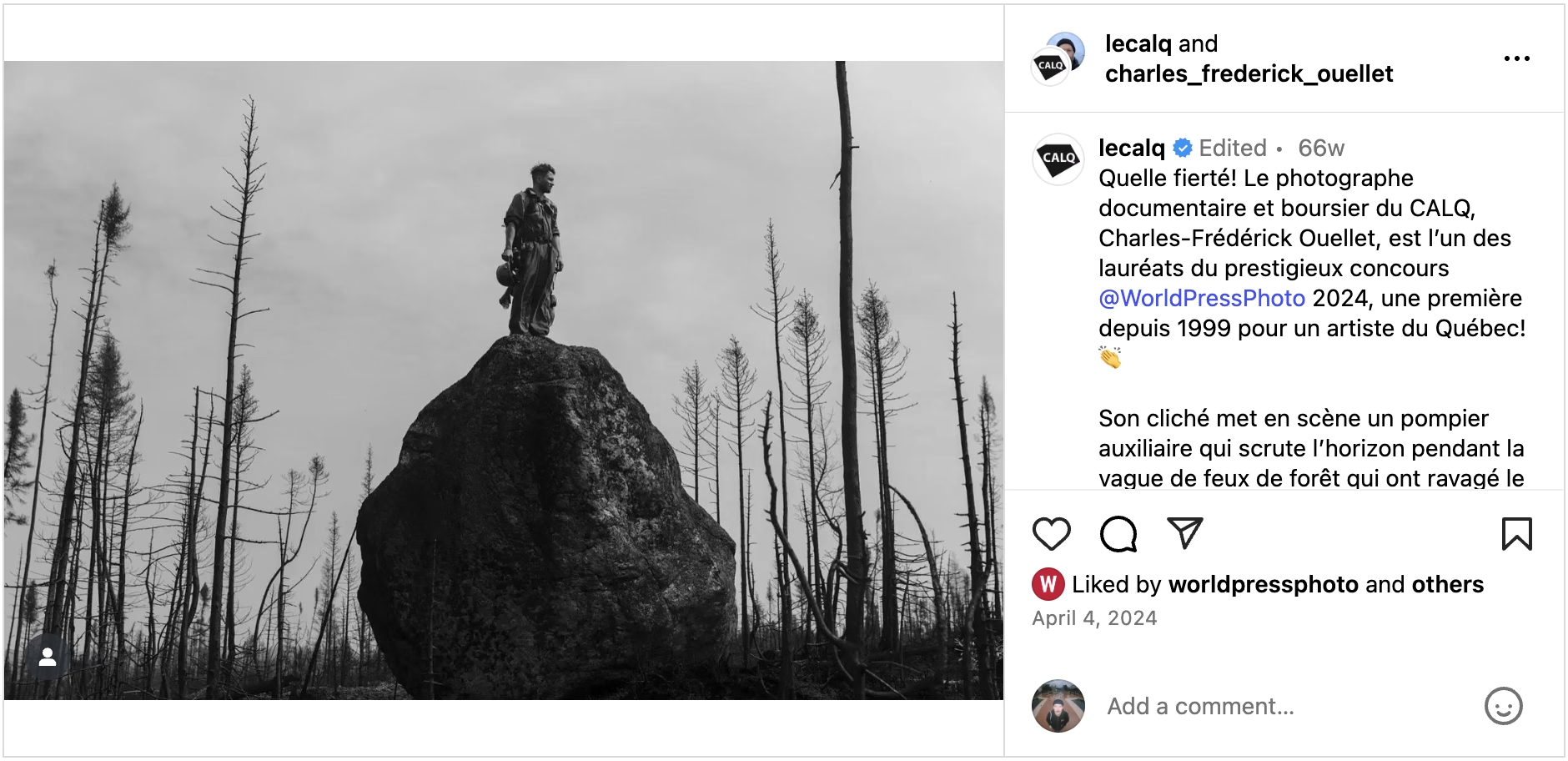
So Can Art Actually Drive Change?
Short answer: sometimes.
These were all great exhibitions that caused me to reflect on my actions and contributions to climate change. Hahn and Berkers might argue that their impact is contained by the gallery. That is, that people who need convincing might not even be the ones buying a ticket. Personally, I would say that these reminders are still important for a sympathetic audience. Lots of us are imperfectly trying to do our part—these stories help to keep our motivation alive and encourage us to keep talking about the importance of our choices.
There are examples of climate art breaking that mould.
One example is Project Pressure’s Voices for the Future, where glacial imagery along with words from young climate activists were projected on the UN building in New York. This collaboration brought climate art out of the gallery and into the public, where people from all walks of life could see it. It’s probably not enough to change someone’s mind, but it might have planted a seed or two, and it makes me wonder if what we need is not more climate art, but climate art that is more widely visible.
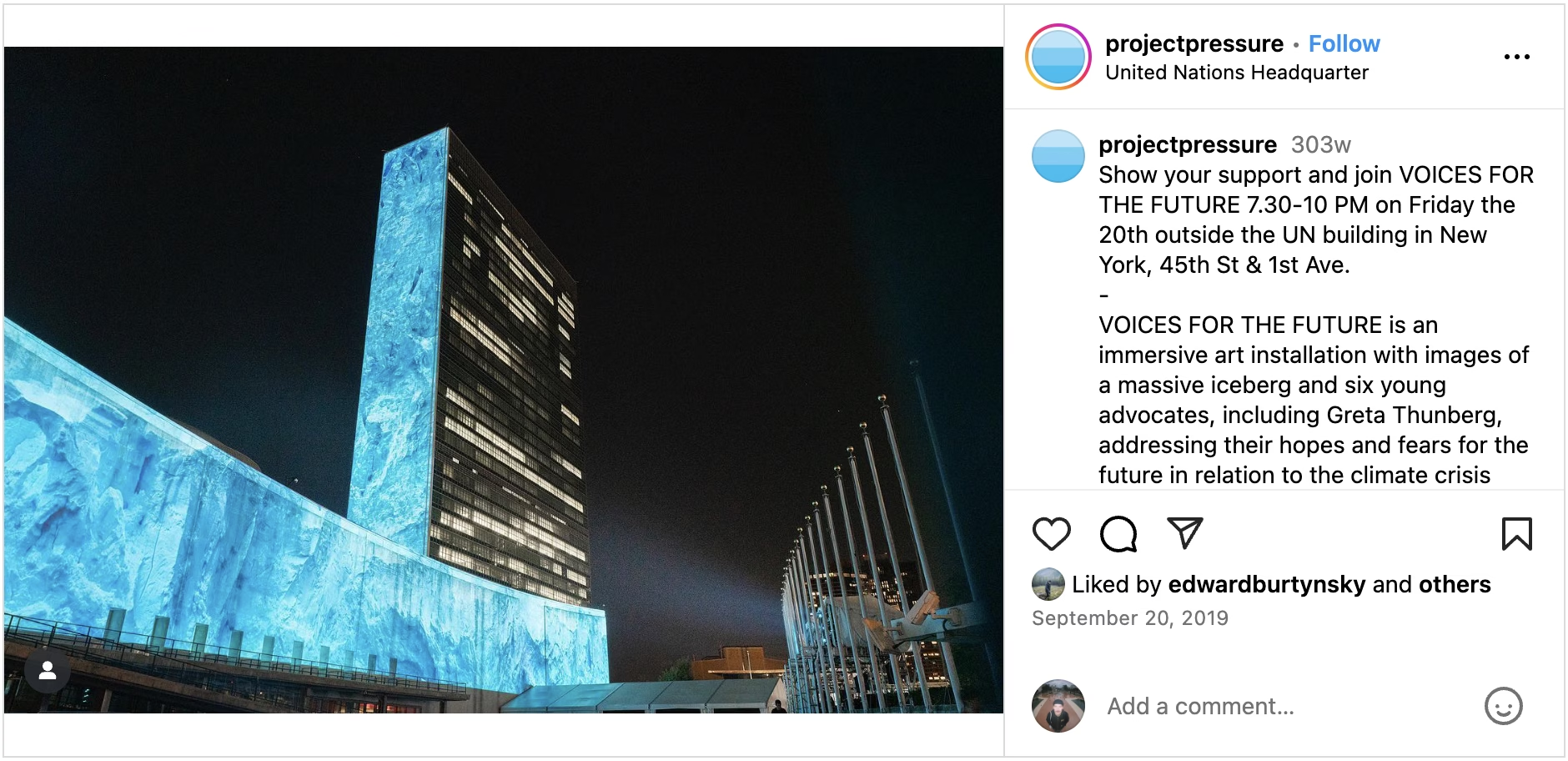
My Wishy-Washy Take
Here’s where I land after all this: maybe art’s job isn’t always to change the world. And that’s okay, as long as it isn’t pretending to. Maybe its job is to remind us why the world is worth changing.
If we measure art’s success only in terms of direct action, we’ll always be disappointed. But if we see it as part of a larger ecosystem—one that includes science, activism, education, and policy—then its role becomes clearer. It’s not the whole answer, but it has a part to play.
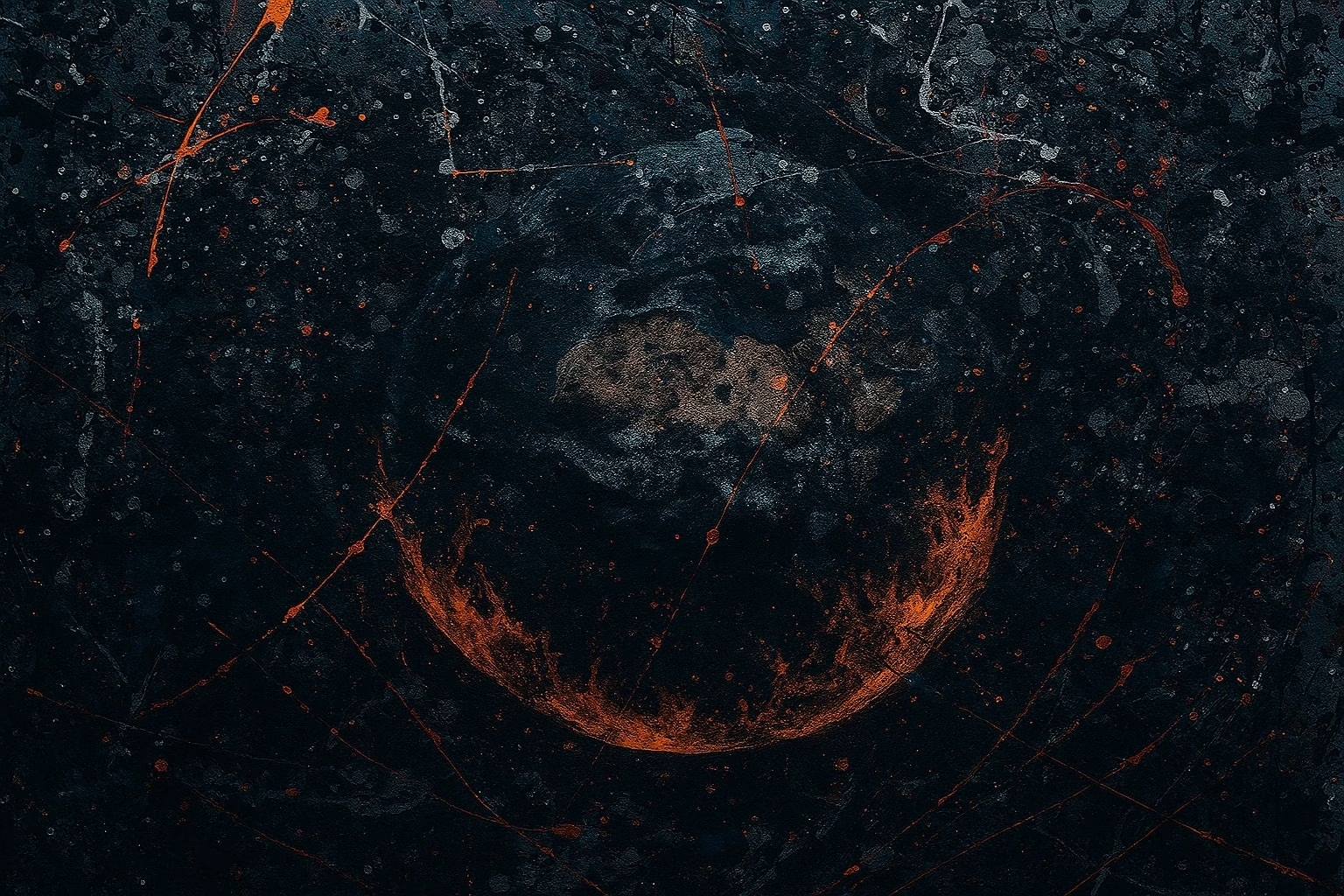
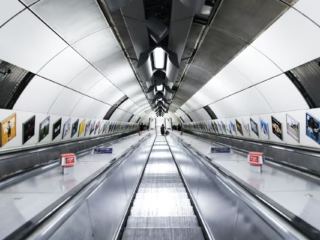

Leave a Reply